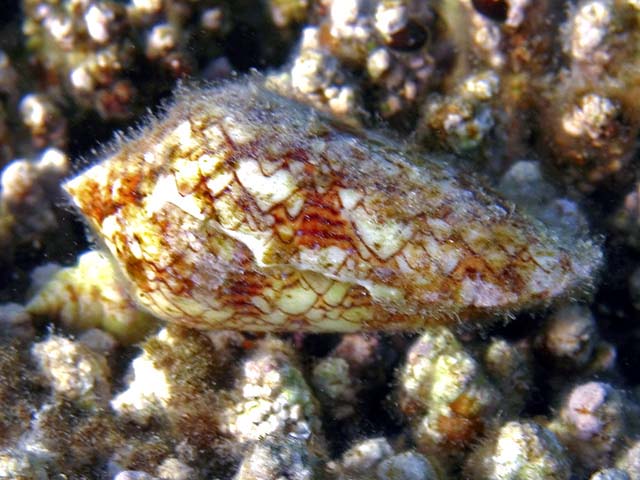In the pursuit of understanding and knowing more about sea life and their benefits to human living, recent researches have identified two mollusk groups as sources of bacteria that can potentially be used in developing modern medications:
- Cone snails
 |
| Conus textile, in situ Photo by G. Rusconi |
With over 800 species, the family Conidae is widely distributed with higher diversity and concentration along the tropical regions. These carnivorous animals use toxic venom not only for feeding, but also for defense. Previous studies have already established the pharmacological potentials of cone snail venom peptides, aptly called conopeptides. However, since it was assumed that thick shelled mollusks have enough defense already, few studies have been made on their symbiotic bacteria. This new study shows that this symbiotic bacteria also produces a neuroactive chemical, which could be useful in pain management.
- Shipworms
 |
Upper: bivalve shell located at the anterior end
Lower: the calcareous tube that lines the excavated burrow
Source |
Don't be fooled by the name, they are not worms. Shipworms are actually bivalves, with the main shell located at the anterior end while the body is slender and cylindrical. They got their name way back when ships are made of wood, where they affix themselves and feed on the hull. This ability of the shipworms to convert wood - despite its lack of proteins and nitrogen- into a suitable food source by using bacteria was found to be very interesting and was the focus of recent studies. Research shows that one form of bacteria used by the shipworms secretes a powerful antibiotic, which would be valuable in improving the current class of antibiotics to fight human diseases that have become resistant to medication.
Awesome, right? Guess we'll be knowing more about cone snails and shipworms in the future!

No comments:
Post a Comment
What do you think? Share your thoughts with us.